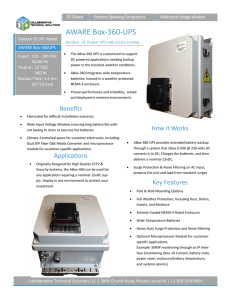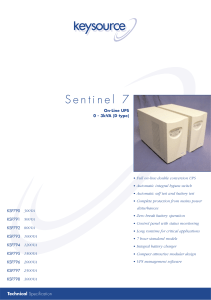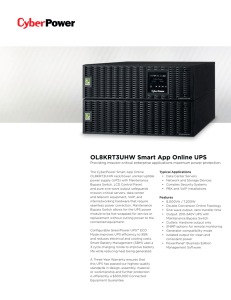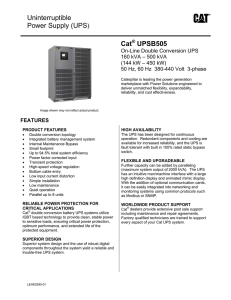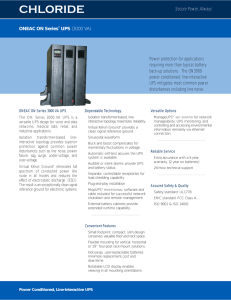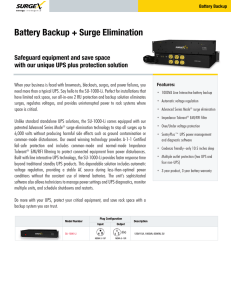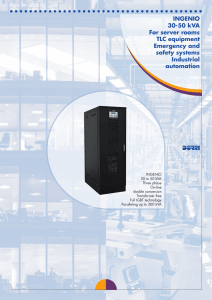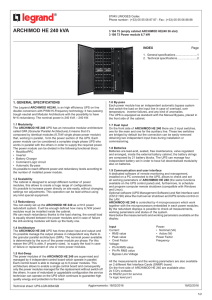UPS PDU Maintenance SCOPE OF WORK Preventative
advertisement
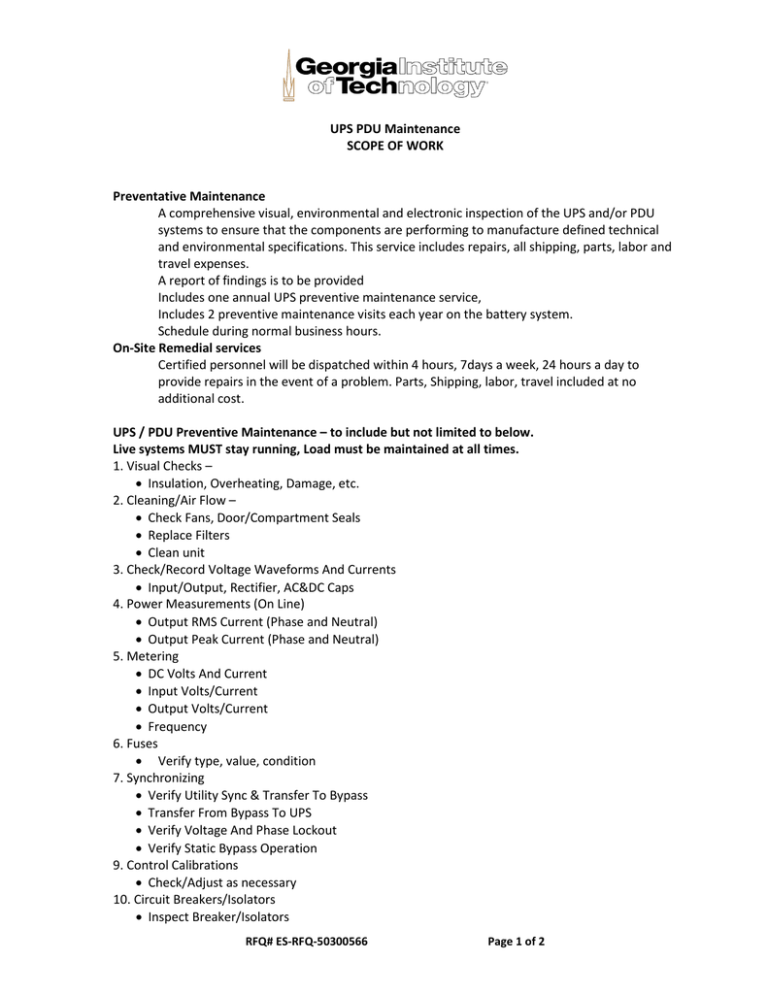
UPS PDU Maintenance SCOPE OF WORK Preventative Maintenance A comprehensive visual, environmental and electronic inspection of the UPS and/or PDU systems to ensure that the components are performing to manufacture defined technical and environmental specifications. This service includes repairs, all shipping, parts, labor and travel expenses. A report of findings is to be provided Includes one annual UPS preventive maintenance service, Includes 2 preventive maintenance visits each year on the battery system. Schedule during normal business hours. On-Site Remedial services Certified personnel will be dispatched within 4 hours, 7days a week, 24 hours a day to provide repairs in the event of a problem. Parts, Shipping, labor, travel included at no additional cost. UPS / PDU Preventive Maintenance – to include but not limited to below. Live systems MUST stay running, Load must be maintained at all times. 1. Visual Checks – • Insulation, Overheating, Damage, etc. 2. Cleaning/Air Flow – • Check Fans, Door/Compartment Seals • Replace Filters • Clean unit 3. Check/Record Voltage Waveforms And Currents • Input/Output, Rectifier, AC&DC Caps 4. Power Measurements (On Line) • Output RMS Current (Phase and Neutral) • Output Peak Current (Phase and Neutral) 5. Metering • DC Volts And Current • Input Volts/Current • Output Volts/Current • Frequency 6. Fuses • Verify type, value, condition 7. Synchronizing • Verify Utility Sync & Transfer To Bypass • Transfer From Bypass To UPS • Verify Voltage And Phase Lockout • Verify Static Bypass Operation 9. Control Calibrations • Check/Adjust as necessary 10. Circuit Breakers/Isolators • Inspect Breaker/Isolators RFQ# ES-RFQ-50300566 Page 1 of 2 • Check Mag/Thermal Settings 11. System/Module Safety Parameters (where possible/Available) • Check Battery Current Limit • Check Input Current Limit • Check Overload Levels • Check Overtemp Circuits 12. Check for Firmware and Software updates and report for approval to update. Battery Preventive Maintenance – To include but not limited to below. 1. Perform safety evaluation of battery, racks, protective equipment and environment. Note and report any discrepancies. 2. Record the ambient temperature of the battery room. 3. Clean normal cell dirt/dust accumulation. 4. Inspect each jar for signs of cracks, excessive bulging and leakage. 5. Measure and record the full string charging voltage and current. 6. Measure and record the AC ripple voltage and current. 7. Measure and record the voltage to ground for each string/cabinet. 8. Measure and record the float voltage across each cell/jar. 9. Measure and record the internal impedance of each cell /jar. 10. Check for corrosion on battery terminals and connectors. Clean as necessary. 11. Check tightness of connections. RFQ# ES-RFQ-50300566 Page 2 of 2




